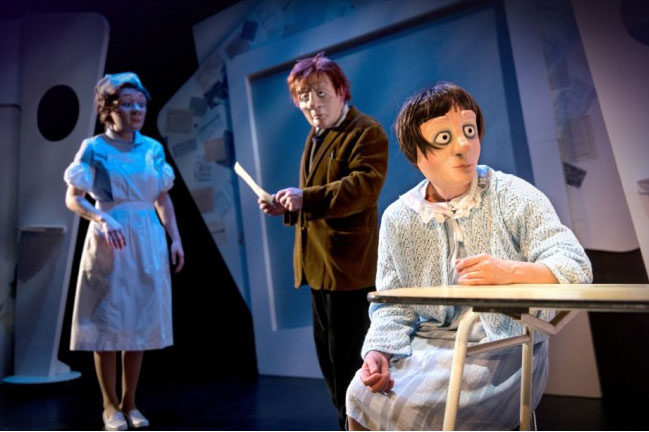
Ah yes, the sixties. A time when trains still had third-class compartments, and milkmen, coal and rag and bone men plied their wares on the streets. Dads smoked pipes at home while Mums puffed in the car or while they did the washing up. Some things, especially sex, were never mentioned at home, only darkly hinted at.
To a backdrop of the popular TV music shows Oh Boy! and later Top of the Pops, we ate on Formica-covered tables, our wallpaper turned pink and orange and our kitchen units became orange and brown. Girlfriends wore white boots with miniskirts, and boyfriends wore leather jackets and went to unisex hairdressers. Armed with our 45’s and our Dansettes, we stood at the end of an old white Britain still in thrall to the gallows, corporal punishment and apartheid, and only just coming to terms with the outcome of the Lady Chatterley’s Lover obscenity trial.
For some, the speed of the so-called sixties revolution wasn’t fast enough. Women in particular were subject to extreme pressures of convention and expectation. Shame often stalked suburbia, where sexual affairs were often snatched illicitly. Birth control was never reliable as long as it depended on blokes remembering to buy ‘something for the weekend’ from the barbershop. The pill was on the way but not widely used till the middle of the decade.
Against this context we find the inspiration for the latest Vamos Theatre production The Best Thing. Vamos writer and director Rachael Savage has picked up the story, originally published in the Guardian, of several unmarried mothers from the sixties who had their babies taken away from them either at birth or shortly afterwards, usually because of pressure from parents, government or the church. Faced with potential ostracism and shame not to mention penury, for most of these women it felt like they had little option but to sign away their children. Savage has followed these stories with her own research into contemporary social history, novels and films and conducting interviews with some of the women affected, who she describes as brave, inspirational and spirited, but often hurt.
Vamos are masters of body language. Wearing full-face masks, not a word is spoken throughout the 80-minute performance. Yet we know exactly what is in the minds of the players, and what they are conveying to one another. In the hunch of a shoulder, the flick of a head, or the fidgeting of fingers, not only do we get all the narrative we need, but the layers that language can introduce are stripped away, leaving us with pure essence of character – a reminder that so much of what we read as humans comes not from the spoken word.
The show takes its name from the phrase apparently most often used to coerce those unfortunate young women into signing away their rights to their children: “It’s the best thing for the baby, it’s the best thing for you.” But Vamos are never maudlin in their approach to dark material. While we are not spared unbearable pathos in this performance, the shadows are often chased away with very funny and wonderfully realised interludes throughout.
From the moment the play kicks off with the raucous sound track of Lulu singing Shout! the pace never dips. That only four actors managed to play sixteen roles between them was impressive. In rolling tableaux-like scenes we are first introduced to the young Lisa, breezing past her pipe-smoking dad to her bedroom (set at the back of the stage) which looks the complete sixties shrine – record covers on the walls, with a wonderful black, white, orange and red quartered sleeveless dress dangling on a hanger. We follow Lisa’s development and her involvement with her boyfriend Dennis. There is some really funny use of Kenneth Wolstenholme’s classic commentary for the World Cup Final of 1966 as a backdrop to their lovemaking.
A much older Lisa later looks back poignantly at her younger self with pain, regret and anger. But there is also fun to be had along the way. Vamos certainly were not going to waste the opportunity to chalk up a bit of sixties action. There are hilarious scenes at the hairdresser when Lisa acquires a bob cut and later at a typing school. At the maternity hospital there are initial laughs before anguish takes hold.
Throughout, the action and the emotions were always stoked effectively by Janie Armour’s original score. In one particular sequence the protagonists’ despair and isolation were amplified perfectly by a drumming track that mirrored their emotional state.
The staging was simple and effective: a back wall pasted with heartbreaking notices of removal consent and letters from women appealing for the well-being of their departed children; a simple Formica table and chairs all that interrupted the forward space, while at the rear Lisa’s little room appeared when lit up behind a gauze screen which also allowed photographs to be projected on to it.
Because they always work anonymously behind masks, the actors cannot be separated or rated by individual performance, but that would be inappropriate in any case. Simply, Richard J Fletcher, Marissa Gunter, Sarah Hawkins and Angela Laverick form a brilliant team that deserved the warm cheer they got from an appreciative audience. Despite the inflexibility of their masks, they were, nonetheless, masters of communication. ★★★★☆ Simon Bishop 25th May 2016
Photo – Alienpen

